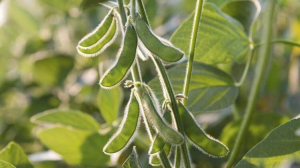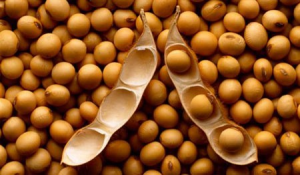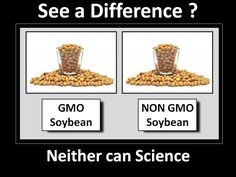The vital claim of the soya bean is that it is the only vegetable product that has all the protein content of meat, eggs or milk products and thus it’s essential to the diet of vegetarians and vegans. The beans themselves are bland and generally unappealing as they never quite develop the rich, meaty textures that other beans do with long cooking. Thus mature soya beans are used to make tofu, which is a soft or firm curd made from the milky liquid obtained by boiling and pressing soya beans and which retain the full protein content.
Soya beans are the basis of many recognised and popular products such as soya sauce, tofu, miso and soya milk but the basic soya bean is just fine eaten the way it is. Soya beans are an excellent source of protein which is perfect if you prefer not to eat meat or dairy products. These beans contain virtually no saturated fat which makes them a perfect candidate for a low-calorie, healthy, balanced diet.
NUTRITIONAL INFORMATION(typical values per 100g): |
||
| Energy | 1731 | kj |
| Energy | 413 | kcal |
| Fat | 20 | g |
| Of which saturates | 2.8 | g |
| Carbohydrate | 22.0 | g |
| Of which sugars | 3.9 | g |
| Fibre | 4.0 | g |
| Protein | 39.0 | g |
| Salt | 0.0 | g |
Some benefits of proper food storage include eating healthier, cutting food costs, and helping the environment by avoiding waste.
Soybeans are currently the only GMO beans that are commercially available in the U.S., but new biotechnology is on the horizon. … These beans are being modified to protect the crop from a destructive Brazilian virus, which could consequentially increase pinto bean yield and decrease waste due to contaminated crops.
but new biotechnology is on the horizon. … These beans are being modified to protect the crop from a destructive Brazilian virus, which could consequentially increase pinto bean yield and decrease waste due to contaminated crops.
In the U.S., the concept of gene editing is on the rise, with modified soybeans serving as a hopeful example for speeding up and streamlining bean modification and production as well as improving its growth and nutritional profile. Typically, soybeans are modified by means of transgenic, which is the process of transferring genes (such as those related to herbicide resistance) from one organism to another. Gene editing is different. Rather than inserting new genes to the existing genetic profile, scientists can modify the existing genetic structure of the targeted organism.
One system that can be used to do this is called CRISPR. In this case, the CRISPR protein “searches for” the appropriate gene in the soybean and rearranges it in such a way that the soybean then carries the desired trait, such as herbicide resistance, without adding in a new gene. Some scientists think this could be an easier, more efficient way to modify soybeans to have the qualities that can benefit farmers and the general population.
A final note: Gene modification helps our beans
While the concept of genetic modification by means of selective farming has existed for generations, modern biotechnology has made this process easier and more efficient. GMO crops, in general, can benefit the U.S. food supply, the well-being of farmers, and the environment. GMO soybeans in particular are widespread because of their utility and versatility in the food supply. The new arising technology in gene modification makes this process even more desirable, as it can build on existing advantages with even greater efficiency.
generations, modern biotechnology has made this process easier and more efficient. GMO crops, in general, can benefit the U.S. food supply, the well-being of farmers, and the environment. GMO soybeans in particular are widespread because of their utility and versatility in the food supply. The new arising technology in gene modification makes this process even more desirable, as it can build on existing advantages with even greater efficiency.
The genetic makeup of a soybean gives it a wide variety of uses, thus keeping it in high demand. First, manufacturers only wanted to use transgenic to be able to grow more soy at a minimal cost to meet this demand, and to fix any problems in the growing process, but they eventually found they could modify the soybean to contain healthier components, or even focus on one aspect of the soybean to produce in larger quantities. These phases became known as the first and second generation of genetically modified (GM) foods. As Peter Celec describes, “benefits of the first generation of GM foods were oriented towards the production process and companies, the second generation of GM foods offers, on contrary, various advantages and added value for the consumer”,including “improved nutritional composition or even therapeutic effects.
DIFFERENCE BETWEEN GMO AND NON-GMO SOYBEANS
- GMO soybeans are soybeans that have undergone genetic engineering for a specific purpose.
- Non-GMO soybeans are soybeans that do not have genetic engineering and still have natural properties. This product has been produced without the use of genetically modified organisms (GMOs) or their derivatives, nor been irradiated.
Additional Information:
Soya beans and soybeans are exactly the same and the names are used interchangeably according to fashion, preference, or habit. The many subsequent products, such as soya/soy sauce, are also exactly the same, whichever spelling is used.
according to fashion, preference, or habit. The many subsequent products, such as soya/soy sauce, are also exactly the same, whichever spelling is used.


